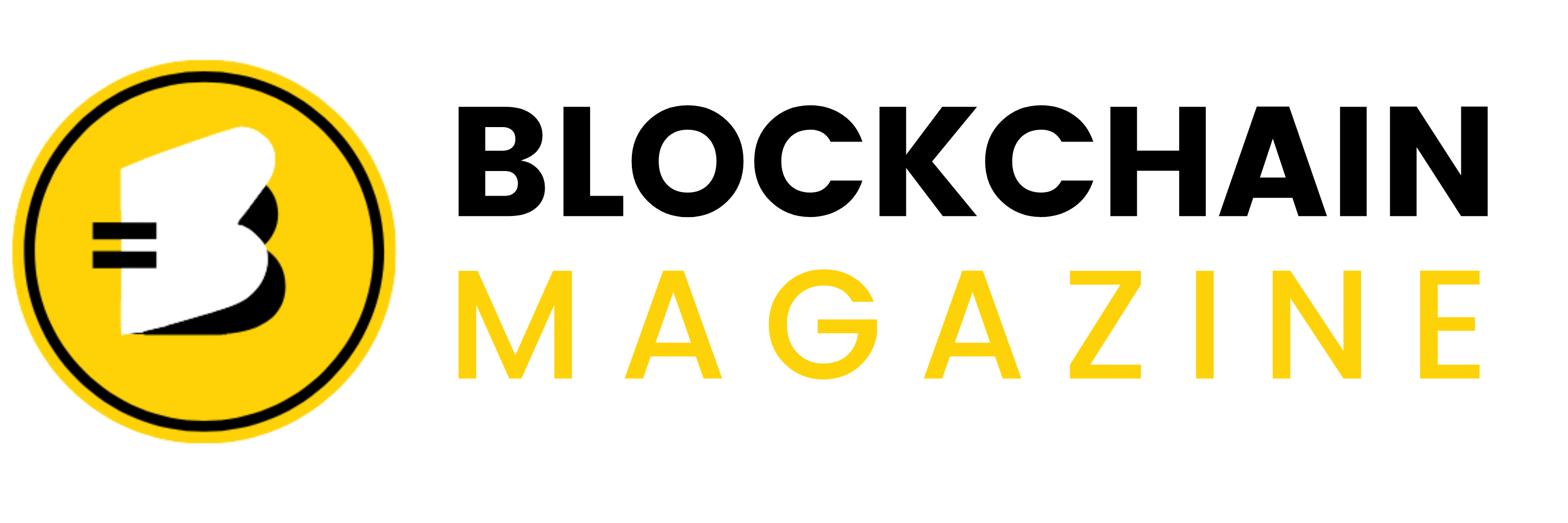Beware: Top 5 Cryptocurrency Scams to Watch Out for in 2025
Cryptocurrency scams are getting sneakier as we head into 2025. With the rise of digital money, scammers are finding new ways to trick people. From fake exchanges to bogus NFT sales, the tricks are endless. Knowing what to watch for can save you from losing your hard-earned cash. Let’s take a look at some of the biggest scams to be on the lookout for this year.
Key Takeaways
- Phishing scams are becoming more targeted, often mimicking real crypto wallets to steal your info.
- Rug pulls in DeFi projects can leave investors with worthless tokens when developers vanish with the funds.
- Fake crypto exchanges lure you in with low fees but are designed to steal your deposits.
- Ponzi schemes promise high returns but collapse when new investors stop coming in.
- NFT scams involve selling fake or plagiarized art, leaving buyers with valueless tokens.
1. Phishing Attacks Targeting Crypto Wallets
Phishing attacks have been causing headaches for years, but now they’re getting a makeover for the crypto world. Scammers are stepping up their game, crafting emails, websites, and even social media messages that look just like the real deal. These attacks are all about tricking you into giving up your wallet info or private keys. Once the bad guys have that, your crypto is as good as gone.
In 2025, the sophistication of phishing attacks has reached new heights, making vigilance more important than ever.
Here’s how they do it:
- Fake Websites: These sites are designed to look exactly like legitimate crypto exchanges or wallet providers. You might get an urgent message about a security breach, urging you to log in to "secure your funds." Spoiler alert: it’s a trap.
- Impersonation Emails: Scammers send emails that seem to be from your crypto wallet provider, asking you to verify your account or update your details. They might even use official logos and branding to look convincing.
- Social Media Scams: Fraudsters use platforms like Twitter and Facebook to promote fake giveaways or investment opportunities, luring you into providing sensitive information.
How to Protect Yourself
- Double-check URLs: Always make sure you’re on the right website before entering any info. Look for small mistakes like typos in the URL.
- Use Two-Factor Authentication (2FA): Adding an extra layer of security can make a huge difference.
- Never Share Your Private Keys: No matter who asks, keep them to yourself.
- Stay Informed: Keep up with the latest fraud techniques to avoid falling victim to these scams.
Remember, if something feels off, it probably is. Trust your gut and stay safe out there.
2. Rug Pulls in DeFi Projects
In recent years, the world of DeFi, or decentralized finance, has exploded with innovation, offering new ways for people to lend, borrow, and earn. But with these opportunities come risks, one of the biggest being rug pulls. Rug pulls are scams where developers create a flashy new DeFi project, attract investors, and then vanish with the funds, leaving everyone else in the lurch.
In 2025, these scams have gotten trickier. Developers often keep their identities hidden, using fake names or pseudonyms. They might even go as far as getting fake audits or setting up partnerships to seem legit. Once enough money is in the pot, they pull the plug and disappear.
Here’s how you can protect yourself:
- Do your homework on the team: Make sure the people behind the project are real and have a good track record.
- Watch out for promises of huge returns: If it sounds too good to be true, it probably is.
- Check the control of smart contracts: Projects with centralized control are easier for scammers to manipulate.
In the ever-evolving landscape of cryptocurrency, staying informed and cautious is your best defense against scams like rug pulls. Remember, in this digital age, not everything that glitters is gold.
For more insights into how rug pulls work and how to spot them, you can read more about rug pulls in cryptocurrency.
3. Fake Crypto Exchanges
In 2025, one of the sneakiest traps in the crypto world is the rise of fake cryptocurrency exchanges. These platforms are designed to look like legitimate trading sites, but their main goal is to steal your hard-earned money or personal information. They lure you in with promises of low fees, bonus rewards, or exclusive tokens.
How They Operate
- Initial Trust Building: Many fake exchanges allow small withdrawals at first, giving users a false sense of security. This tactic builds trust with unsuspecting investors.
- Sudden Lockdown: Once they gather enough deposits, they suddenly freeze all withdrawals, leaving users in the lurch.
- Disappearance Act: After locking funds, these exchanges often vanish without a trace, making it nearly impossible to recover lost assets.
Red Flags to Watch
- Unrealistic Rewards: Be wary of platforms offering too-good-to-be-true bonuses or returns.
- Lack of Transparency: Legitimate exchanges provide clear information about their operations and team.
- Poor Customer Support: Non-existent or unresponsive support can be a major warning sign.
Protecting Yourself
- Stick to Known Exchanges: Use well-known platforms like Coinbase or Binance.
- Verify Authenticity: Always double-check the URL and look for secure site indicators.
- Research Thoroughly: Before investing, research the exchange’s reputation and user reviews.
In the fast-paced crypto market, staying informed and cautious can save you from falling into these cleverly disguised traps.
For a detailed list of scams and exploits in 2025, including incidents like Moby, check out crypto hacks from 2025.
4. Ponzi and Pyramid Schemes
Ponzi and pyramid schemes have long been a menace, and now they’ve infiltrated the crypto world. These scams promise sky-high returns with little risk, luring in unsuspecting investors. The trick? Early investors are paid with the money from newer investors, not from actual profits. Eventually, this house of cards collapses when there aren’t enough new recruits to keep the payouts going.
In the crypto scene, Ponzi schemes often masquerade as high-yield investment platforms or trading bots, boasting guaranteed profits. These platforms pull people in with flashy marketing and testimonials from "real" users who claim they’ve struck it rich. But once the scammers run out of new investors, the scheme falls apart, leaving most people with empty pockets.
It’s crucial to stay alert to these schemes, as they can lead to devastating financial losses. Many investors have been left with nothing but regrets.
Red Flags to Watch For:
- Promises of unsustainable returns.
- Pressure to recruit new investors.
- Lack of transparency in operations.
How to Avoid Falling for It:
- Be skeptical of any platform promising high returns, especially in volatile markets like crypto.
- Research how the platform claims to generate returns and verify its business model.
- Avoid platforms that focus more on recruiting new investors than on legitimate trading or investment activities.
A real-world example is the case of Wang and her associate Miles Guo, who orchestrated complex crypto scams. Their fraudulent activities highlight the severe consequences for those involved in such schemes. Staying informed and cautious can help you steer clear of these traps.
5. NFT Scams
NFTs, or Non-Fungible Tokens, have taken the digital world by storm, often fetching sky-high prices. But this booming market is not without its pitfalls. In 2025, NFT scams have become increasingly crafty, preying on both new and seasoned collectors.
One prevalent scam involves fake NFT marketplaces. These platforms mimic legitimate sites, tricking users into purchasing counterfeit NFTs. These fake tokens might look genuine, but they hold no real value, leaving buyers with nothing but regret. It’s crucial to verify the marketplace’s authenticity before making any transaction.
Another common trap is the promise of exclusive NFT drops. Scammers create buzz around a limited-time offer, enticing collectors to pay upfront. However, once the payment is made, the NFTs never materialize, and the scammers vanish into thin air.
Here are some tips to steer clear of NFT scams:
- Stick to well-known marketplaces with solid verification systems.
- Authenticate the artist or project before purchasing.
- Be wary of projects that boast massive returns or exclusive access without credible backing.
In the fast-paced world of NFTs, taking a moment to double-check can save you from costly mistakes. Always be skeptical of deals that seem too good to be true.
Conclusion
As we look ahead to 2025, it’s clear that cryptocurrency scams are only getting trickier. Scammers are getting smarter, and their schemes are more convincing than ever. It’s a wild world out there, and if you’re diving into crypto, you need to keep your wits about you. Always double-check everything, from the platforms you use to the people you trust with your investments. Remember, if something feels off or too good to be true, it probably is. Stay informed, stay cautious, and you’ll be better equipped to protect your assets in this ever-evolving digital landscape.
Frequently Asked Questions
What are phishing attacks in crypto?
Phishing attacks trick people into giving away their crypto wallet info by pretending to be a trusted source. Always double-check website addresses and never share your private keys.
What is a rug pull in DeFi?
A rug pull happens when a new crypto project suddenly takes all the money and disappears. Always research the team behind any project before investing.
How can I spot a fake crypto exchange?
Fake exchanges look real but are set up to steal your money. Stick to well-known exchanges and read reviews before signing up.
What are Ponzi schemes in crypto?
In crypto Ponzi schemes, returns are paid to early investors using new investors’ money, not real profits. Be wary of platforms promising high returns.
How do NFT scams work?
NFT scams might sell fake art or promise drops that never happen. Always verify the authenticity of NFTs and the marketplace.
How can I protect myself from crypto scams?
Always do your homework before investing, use two-factor authentication, and be skeptical of offers that seem too good to be true.
Stay informed with daily updates from Blockchain Magazine on Google News. Click here to follow us and mark as favorite: [Blockchain Magazine on Google News].
Get Blockchain Insights In Inbox
Stay ahead of the curve with expert analysis and market updates.
latest from tech
Disclaimer: Any post shared by a third-party agency are sponsored and Blockchain Magazine has no views on any such posts. The views and opinions expressed in this post are those of the clients and do not necessarily reflect the official policy or position of Blockchain Magazine. The information provided in this post is for informational purposes only and should not be considered as financial, investment, or professional advice. Blockchain Magazine does not endorse or promote any specific products, services, or companies mentioned in this posts. Readers are encouraged to conduct their own research and consult with a qualified professional before making any financial decisions. The featured image used is just a creative depiction of the title and it does not intend to hurt sentiments of any person or institution. If it hurts anyone sentiments, please do not hesitate to reach out to Blockchain Magazine.

 Bitcoin
Bitcoin  Ethereum
Ethereum  XRP
XRP  Tether
Tether  Solana
Solana  USDC
USDC  Dogecoin
Dogecoin  Cardano
Cardano  Lido Staked Ether
Lido Staked Ether  TRON
TRON  Wrapped Bitcoin
Wrapped Bitcoin  Chainlink
Chainlink  Wrapped stETH
Wrapped stETH  Avalanche
Avalanche  Sui
Sui  Stellar
Stellar  Litecoin
Litecoin  Toncoin
Toncoin  Shiba Inu
Shiba Inu  Hedera
Hedera  LEO Token
LEO Token  USDS
USDS  Hyperliquid
Hyperliquid  Polkadot
Polkadot  WETH
WETH  MANTRA
MANTRA  Bitcoin Cash
Bitcoin Cash  Bitget Token
Bitget Token  Ethena USDe
Ethena USDe  Wrapped eETH
Wrapped eETH  Uniswap
Uniswap  Monero
Monero  NEAR Protocol
NEAR Protocol  Pepe
Pepe  WhiteBIT Coin
WhiteBIT Coin  Bittensor
Bittensor  Ondo
Ondo  Aave
Aave  Aptos
Aptos  Internet Computer
Internet Computer  Dai
Dai  Official Trump
Official Trump  Mantle
Mantle  Ethereum Classic
Ethereum Classic  Tokenize Xchange
Tokenize Xchange  OKB
OKB  Gate
Gate  sUSDS
sUSDS  Sonic (prev. FTM)
Sonic (prev. FTM) 




